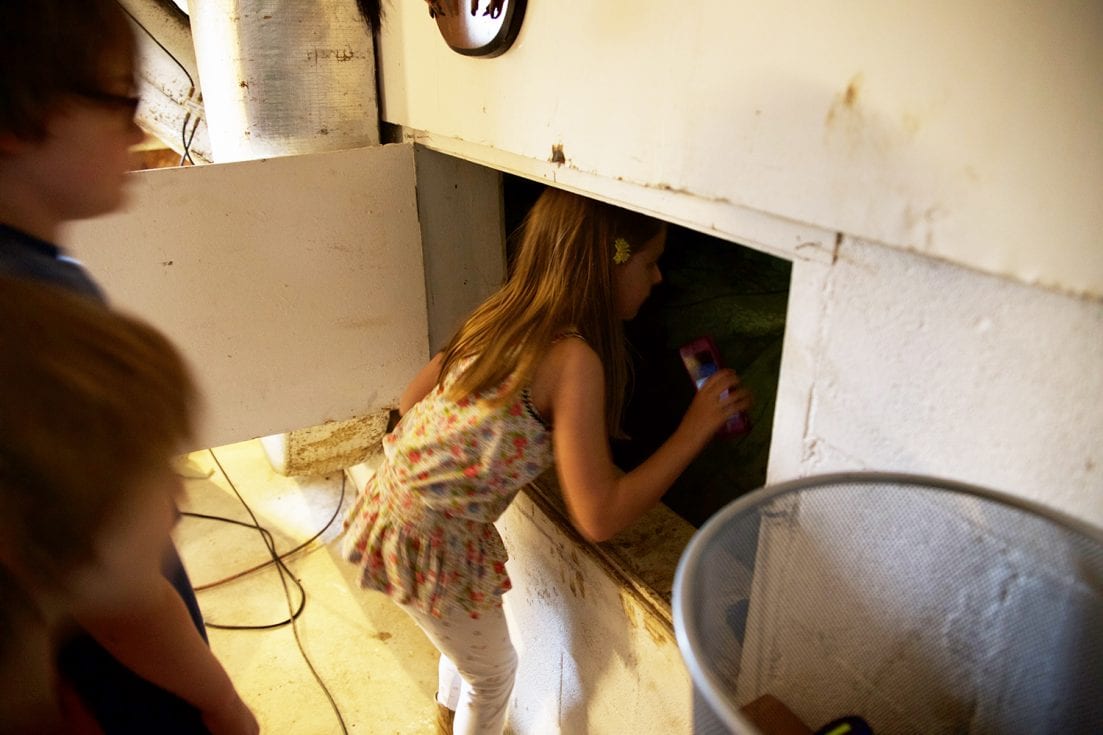If your home has a crawl space, your relationship with it probably falls into one of three categories:
-
“Out of sight, out of mind.” {AKA denial: It’s a mysterious void and you’re not going anywhere near it}
-
“Oh no, absolutely not!-I’m not going under there unless it’s to rescue a puppy {Fear}
-
“I could survive down there for years.” {Crawl space pro!}
I (Jamin) fall into the latter category. Encapsulating and maintaining it has actually become an obsession of mine. I’ve even thought through how I could strategically tap into our pool, which sits a mere 7 feet from the crawl space, to siphon water and keep our family alive when the zombies show up. But I get it, I’m not normal. Most people want their crawl space to be like that one distant cousin you only hear about at Thanksgiving: slightly mysterious, a little unsettling, and probably harboring a weird secret.

So, whether you’re a crawl space denier, avoider, or someone who swears they once saw raccoon eyes peering out, you deserve the facts. It’s good to brush up on those crawl space details, and I’m here to tell you why it matters.
Here are 5 things anyone living in a house with a crawl space should actually know:

 Our kids were mesmerized by our crawl space before we took on our renovation. It was a journey to restore the entire thing. Now it looks a little more like the photo below. This is the secondary entry.
Our kids were mesmerized by our crawl space before we took on our renovation. It was a journey to restore the entire thing. Now it looks a little more like the photo below. This is the secondary entry.

1.
Ventilation isn’t just for the parts of your home you live in. It matters underneath your house, too. Crawl spaces trap moisture, which leads to mold, mildew, and the kind of smells that scream “haunted house.” You can become nose blind to them over time, and it’s a good indicator of the health of your home. For years, the standard was to vent crawl spaces. And while that’s better than nothing, it still causes major problems.

Now, the modern-day recommendation to encapsulate and seal all penetrations, along with installing a vapor barrier, is a game-changer. It keeps moisture out, lowers energy bills, and prevents mold from growing. And because we want our home to breathe, pair it with a dehumidifier to maintain a healthy relative humidity and circulate the air, and you’re in business.
2. What Happens in the Crawl Space… Doesn’t Stay There
You might think that creepy little space has nothing to do with your daily life, but fun fact:
Up to 50% of the air you breathe on your first floor comes from your crawl space.
If you smell damp earth or Eau de Mildew No. 5, it’s not your imagination. It’s science. Air rises through cracks and penetrations in your home. If it passes through a swampy crawl space first? You’re breathing that in, and your dinner guests will probably wonder why you like blue cheese.

3. Critters Think It’s an Airbnb
If you’re not managing your crawl space, someone, or something, will. And I don’t mean houseguests. I mean something with fur, scales… or a white stripe down its back. Unsealed crawl spaces are prime real estate for rodents, snakes, insects, and all the nightmares you’ve had. Regular inspections and professional sealing will keep your crawl space off the animal rental market. And once it’s sealed (especially by a company like Groundworks), your future inspections can just be quiet little “getaways” from the family.

4. Water = Bad
A little water after heavy rain is common. The water table rises during rainy seasons—it’s just what happens. But it’s another reason encapsulation matters: it keeps that water beneath the plastic barrier instead of soaking into your house. Still, you don’t want water pooling under the plastic. That’s where drainage comes in: Do you have functioning drainage? Is your sump pump working?
Unchecked water in the crawl space leads to wood rot, foundation damage, mold, and structural issues that are not cute or cheap
Think of it like a leaky roof… but underneath your home.

5. Light Her Up
I firmly believe most people fear their crawl space simply because it’s dark. That’s why I’m a fan of lighting it like the runway at the Nashville airport.
It does two things:
1. Makes the space way less scary.
2. Makes inspections easier.
If you’re inspecting your crawl space with a flashlight, how much do you think you’re actually going to see? Install a few 4″ recessed lights and thank me later. It’s truly a game changer for maintaining underneath your home.
Out of Sight, Out of Mind = Out of Money
Ignoring your crawl space is too expensive. It can cause your energy bills to spike, your floorboards to sag, and cost you your peace of mind. It encourages water damage, mold growth, and small, unwanted tenants to stay put. In short, ignoring something so important can cause long-term damage to your home and your health.
Groundworks (a national leader in crawl space solutions) says that a properly encapsulated and insulated crawl space can save you up to 18% on heating and cooling costs. And catching problems early always saves you money later.

Here’s the good news:
If you’re not preparing for the zombie apocalypse, you don’t really have to go into your crawl space. {Ashley won’t go in ours unless it’s a giveaway for our readers.}
But pretending it doesn’t exist? That’s so 1980s.
Instead, give it some attention. Call in the pros (like Groundworks!). They’ll assess it, make recommendations, and get it ready… just in case the zombies do show up. While you wait, check out their crawl space quiz to figure out if you might already have a problem. It’s time to reclaim your peace of mind without ever picking up a flashlight.
Because grown-up homeownership means loving even the weirdest parts of your house…from the top of the roof to the bottom of the crawl.







